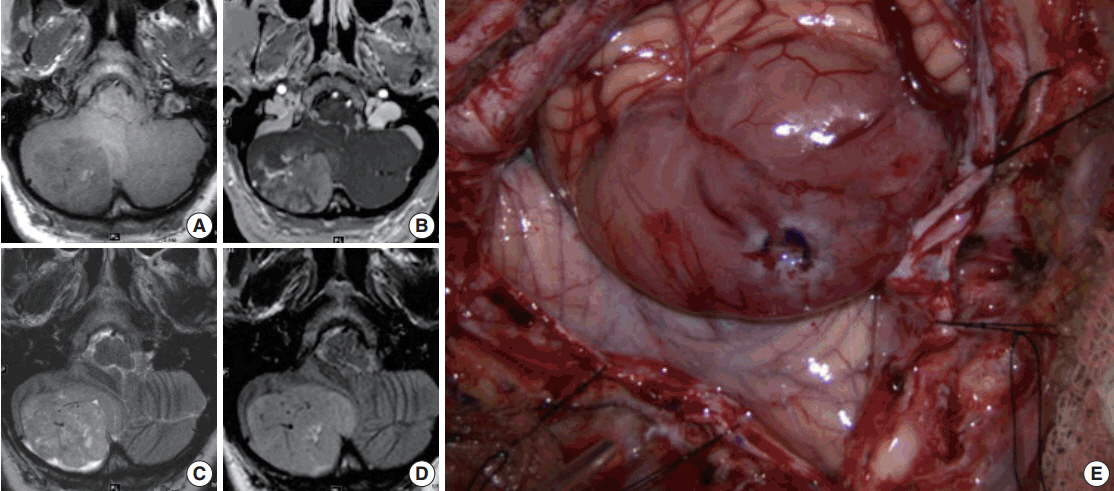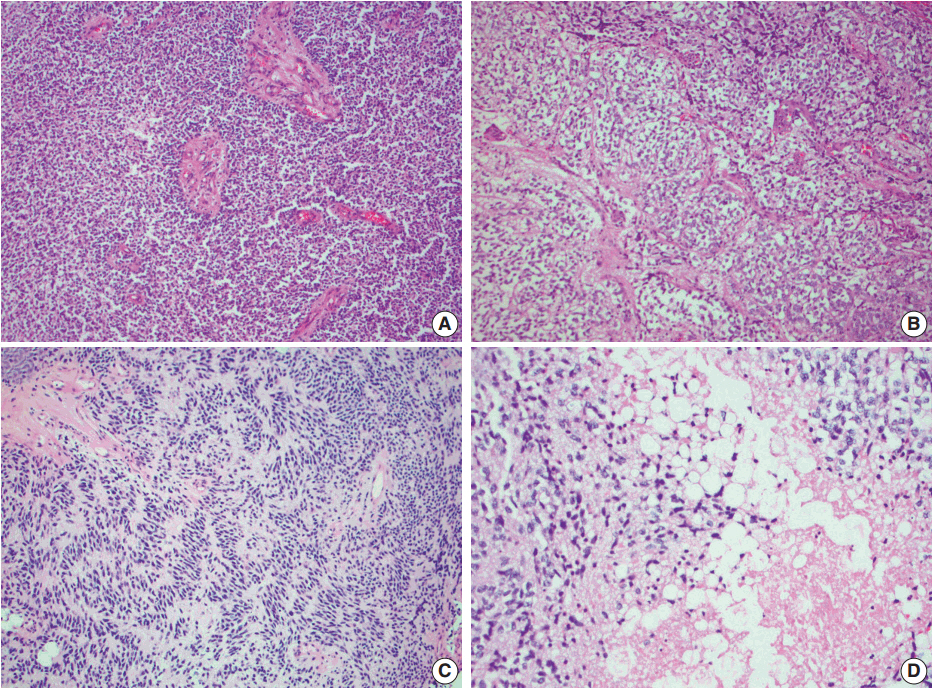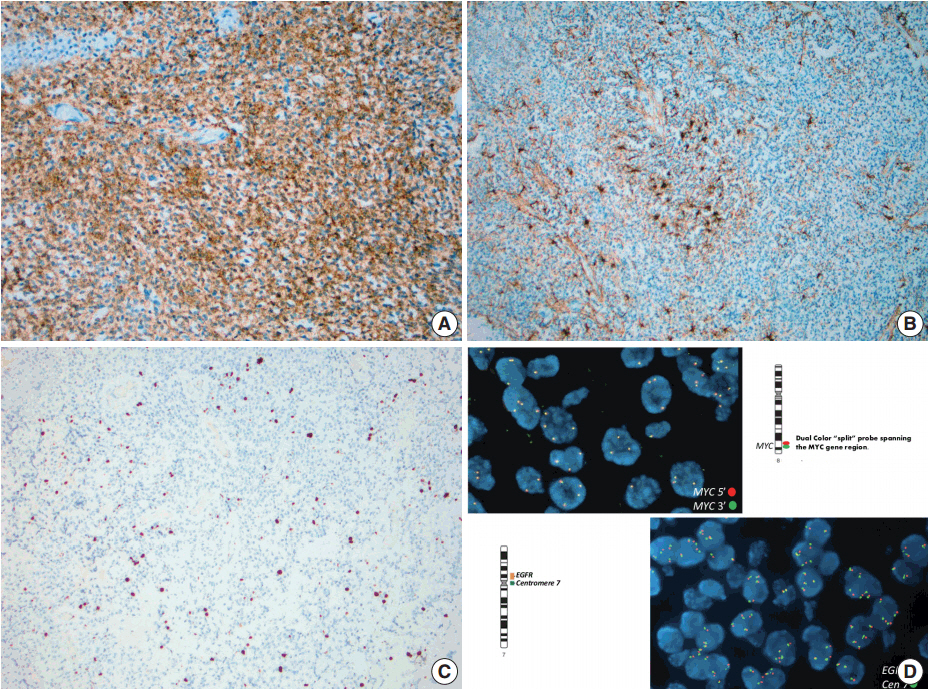J Pathol Transl Med.
2017 May;51(3):335-340. 10.4132/jptm.2016.07.24.
Cerebellar Liponeurocytoma: Relevant Clinical Cytogenetic Findings
- Affiliations
-
- 1Department of Neurosurgery, University of California-Los Angeles, Los Angeles, CA, USA. atucker@mednet.ucla.edu
- 2Division of Neuropathology, Department of Pathology and Laboratory Medicine, University of California-Los Angeles, Los Angeles, CA, USA.
- 3Division of Neuroradiology, Department of Radiological Sciences, University of California-Los Angeles, Los Angeles, CA, USA.
- 4Division of Clinical and Molecular Cytogenetics, Department of Pathology and Laboratory Medicine, University of California-Los Angeles, Los Angeles, CA, USA.
- KMID: 2392603
- DOI: http://doi.org/10.4132/jptm.2016.07.24
Abstract
- No abstract available.
MeSH Terms
Figure
Reference
-
1. Bechtel JT, Patton JM, Takei Y. Mixed mesenchymal and neuroectodermal tumor of the cerebellum. Acta Neuropathol. 1978; 41:261–3.
Article2. Nishimoto T, Kaya B. Cerebellar liponeurocytoma. Arch Pathol Lab Med. 2012; 136:965–9.
Article3. George DH, Scheithauer BW. Central liponeurocytoma. Am J Surg Pathol. 2001; 25:1551–5.
Article4. Louis DN, Ohgaki H, Wiestler OD, et al. The 2007 WHO classification of tumours of the central nervous system. Acta Neuropathol. 2007; 114:97–109.
Article5. Jenkinson MD, Bosma JJ, Du Plessis D, et al. Cerebellar liponeurocytoma with an unusually aggressive clinical course: case report. Neurosurgery. 2003; 53:1425–7.
Article6. Gonzalez-Campora R, Weller RO. Lipidized mature neuroectodermal tumour of the cerebellum with myoid differentiation. Neuropathol Appl Neurobiol. 1998; 24:397–402.7. Oudrhiri MY, Raouzi N, El Kacemi I, et al. Understanding cerebellar liponeurocytomas: case report and literature review. Case Rep Neurol Med. 2014; 2014:186826.
Article8. Taruscio D, Danesi R, Montaldi A, Cerasoli S, Cenacchi G, Giangaspero F. Nonrandom gain of chromosome 7 in central neurocytoma: a chromosomal analysis and fluorescence in situ hybridization study. Virchows Arch. 1997; 430:47–51.
Article9. Rodriguez FJ, Mota RA, Scheithauer BW, et al. Interphase cytogenetics for 1p19q and t(1;19)(q10;p10) may distinguish prognostically relevant subgroups in extraventricular neurocytoma. Brain Pathol. 2009; 19:623–9.
Article10. Horstmann S, Perry A, Reifenberger G, et al. Genetic and expression profiles of cerebellar liponeurocytomas. Brain Pathol. 2004; 14:281–9.
Article
- Full Text Links
- Actions
-
Cited
- CITED
-
- Close
- Share
- Similar articles
-
- Cerebellar Liponeurocytoma with an Unusually Aggressive Histopathology : Case Report and Review of the Literature
- A Cerebellar Infarction Presented with a Clinical Seizure
- Chromosome Analysis of Ascitic Fluids from Patients with Malignant Tumor
- A Case of Cavernous Angioma of the Cerebellar Vermis
- Neuro-otological aspects of cerebellar stroke




